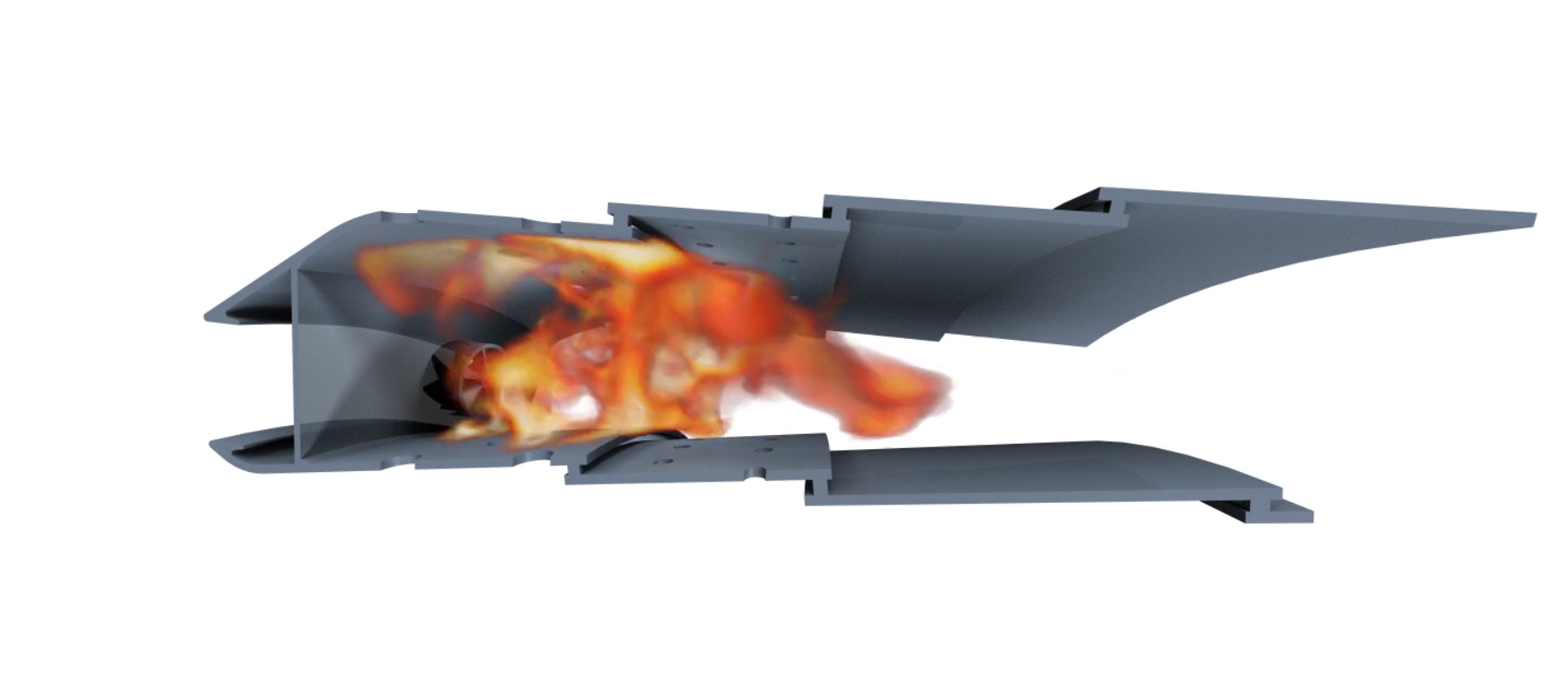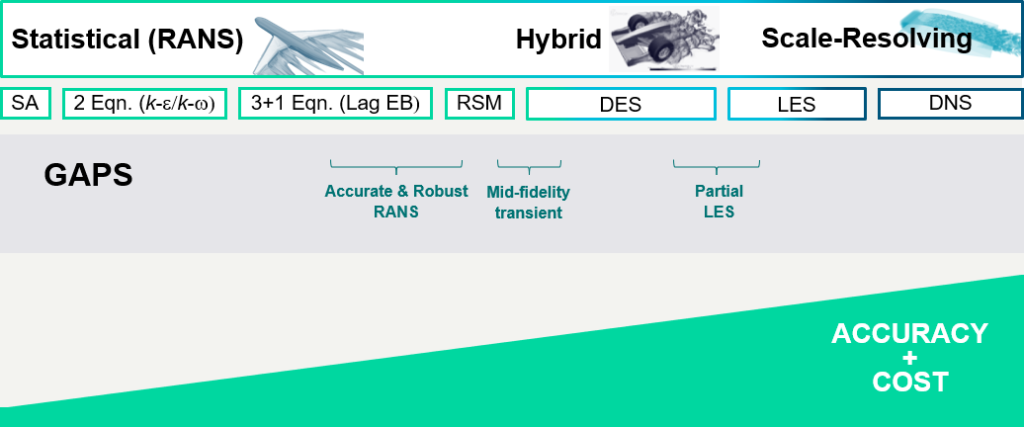The Scale-Resolving Hybrid (SRH) Turbulence Model

“When I meet God, I am going to ask him two questions: Why relativity? And why turbulence? I really believe he will have an answer for the first.”
The quote above, attributed to physicist and Nobel Prize laureate Werner Heisenberg, emphasizes the perspective on turbulence as a mystery, even for the sharpest minds of the academic community.
While the level of sophistication of turbulence models has been continuously refined over the years since Heisenberg’s statement, we are still far from having a single turbulence model which would be applicable for all industrial computational fluid dynamics (CFD) applications.
Choosing the right turbulence model for CFD simulation is still part-art, part-science. To help the user in this selection process, Simcenter STAR-CCM+ offers a carefully selected choice of the most advanced turbulence models, especially focusing on high-fidelity steady state RANS models, and state-of-the-art scale resolving models (e.g. LES and DES).

In an industrial setting, choosing the best turbulence model out of these options often comes down to two questions:
1) How much time do you have?
2) How accurate should the result be?
One topic which continues to be a challenge even in the days of HPC computing in the cloud, is how to make the most out of limited resources. You can either obtain a required level of accuracy for the lowest possible computational cost and turn-around time, or the highest possible accuracy using a specific amount of resources.
Below you will see Unsteady RANS vs DES for a cylinder in a cross-flow. Although a simplistic reference case, it highlights the different levels of fidelity of the two modeling approaches. Mid-fidelity models aim at bridging the gap between the two former approaches to capture as much turbulent dynamics as possible for any given time step and mesh size, regardless of if the resolution is coarsened towards URANS quality, or refined towards DES fidelity.
Mind the gap
The balance between accuracy and computational cost has always been a constant challenge through the evolution of CFD, this is especially true in turbulence modeling. URANS is often used when steady RANS is insufficiently accurate, and some amount of unsteadiness is required. On the other hand, DES is used when full fidelity is required in the core flow, but where the boundary layer can be modelled with simpler means without degrading accuracy to an unacceptable level. The downside of the former model is that unsteady RANS will not converge towards a high-fidelity solution such as LES/DNS, regardless of how much the mesh and time step is refined. The shortcoming of DES is that, although the boundary layer can be model with reduced fidelity, the core flow still requires LES resolution, and will not revert to RANS as the mesh and timestep is coarsened.
The all-new Scale-Resolving Hybrid (SRH) turbulence model
It is clear that URANS and DES have their pros and their cons, it is also important to note that there is a gap between them both in terms of accuracy and cost. Enter the Scale-Resolving Hybrid (SRH) turbulence model. Technically, SRH is a variation of both URANS and DES, where the flow is filtered both in time (equivalent to URANS for large time-steps) and space (equivalent to DES for fine meshes) Whereas URANS hits an accuracy threshold as the timestep is refined, SRH captures more and more small-scale turbulent structures. In the limit of mesh and timestep refinement, SRH recovers LES/DNS. However, if either the mesh or the timestep is under-resolved, the SRH model determines which of the two is the limiting factor, and adjusts the eddy viscosity correspondingly, to always recover the highest possible fidelity for a given mesh and time step.
The effect? A transient turbulence model which poses fewer challenges for the user to carefully calibrate the mesh and time step for a given problem. The SRH model will take a given mesh and timestep and make the most out of it.
The videos above show a comparison between URANS and SRH on the same mesh and time step for a generic combustion chamber test case. As can be seen, the SRH simulation resolves more small-scale dynamics than the equally computationally expensive URANS simulation.
More turbulence; less cost
As an example, consider the demonstrator combustion chamber below. Combustion chambers are often modeled with RANS when computational resources and turn-around time is of higher priority than capturing the full fidelity dynamics. However, combustion is an inherently unsteady process, where the dynamics of the large-scale turbulence affects the combustion process. To capture this unsteady dependency, the most accurate results will naturally be given by an LES approach, although this comes at a very high computational cost, which often is out of reach in day-to-day production environments. In the URANS snapshot below, some level of unsteady detail is captured. However, from the SRH snapshot, which was run on the same mesh, timestep, and solver settings, it is clearly visible how a higher level of turbulence scales are being captured. The animations below show the same example, but in motion.
This specific case is just an illustrative example. The SRH model is a general-purpose model, and was not developed especially for combustion chamber simulations, nor is it limited to this application. The model can be utilized whenever a URANS approach is currently being employed, but where a higher level of fidelity is desired, at a negligible additional computational cost.
Whether or not Heisenberg ever got his question answered will remain unknown. But even though we may never fully understand all the whys and wherefores of turbulence, it is fully understood that status quo is not enough, and further innovation will continue long into the future.
With the introduction of SRH, Simcenter STAR-CCM+ is taking one step further to conquering the challenge of turbulence modeling. The model is introduced in version 2020.3, which will soon be available for anyone to evaluate.


